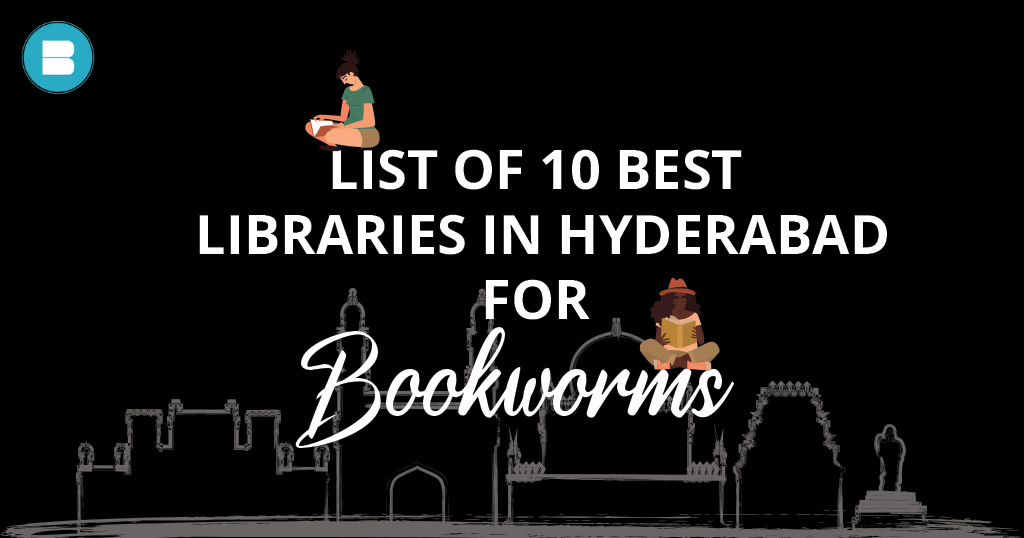
List of 10 Best Libraries in Hyderabad for Bookworms
Are you looking for best libraries in Hyderabad? Whether you are a student or a bibliophile, a library membership is an excellent investment. If you’re seeking for libraries where you can read, borrow books, and attend culture and arts events, look no further. Libraries are indeed utopia for passionate book lovers. They not only have amazing books, but also a tranquil place in which to read them. Read: List of Top 15 Best Romance Novels of all Time. Thousands of volumes of many kinds under one roof—a reader’s quest for information comes to an end here. So, here is a list of top 10 best libraries in Hyderabad: State Central Library British Council Library Ink Readers The Book Shelf Treasure House Just Books Books n More Vivekanand Institute & Library City Central Library Sri Krishnadevaraya Telugu Bhasha Nilyam 1. State Central Library Address: office of Director of public libraries, 1st floor, state, NH163, Hyderabad, Telangana 500012 The library is located in Afzal Gunj, on the banks of the Musi River. It has 500,000 books and magazines on display, including some rare Palm-leaf manuscripts. This library serves as the pinnacle of the state’s library system. The structure was built in 1891. It is one of the city’s most imposing monuments and was designated a heritage site by INTACH, Hyderabad, in 1998. SCL has already scanned over 40,000 volumes with the assistance of Carnegie Mellon University’s Universal Online Library Projects. Titles in Hindi, English, Telugu, Urdu, and Persian have been digitised. State Central Library, Best Libraries in Hyderabad You may also like: Top 10 Rhetorical Devices Every Writer Should Know 2. British Council Library Address: Plot No 1202 & 1215/A, 4th Floor, SL Jubilee, Road No 36, Jubilee Hills, Hyderabad – 500033 The British Council in Jubilee Hills contains a library, which is undoubtedly one of the best-stocked in the city. Aside having hundreds of books, hardbound publications, and magazines, the British Library also provides digital content that can be accessed from the convenience of your own home. The space is quite large, well-lit, and reminiscent of solid university libraries, and they also host a variety of events. Whether you’re looking for fiction, self-help, poetry, or children’s books, you’ll discover plenty. Indeed, the British Library has a big online and offline collection that is useful even for scholars. Is it too wonderful to be true? This is due to the membership fee being significantly higher than that of any library. You may also read: The Mighty Red by Louise Erdrich: A Deep Dive into Her Latest Novel British Council Library, Best Libraries in Hyderabad 3. Ink Readers Address: Plot 70, Sri Ram Nagar Colony, Kondapur, Hyderabad – 500084 InkReaders is a book rental library in Kondapur, and if you reside in or around the region, you should go there. When it comes to convenience, they have a solid online presence and deliver books right to your door. If you enjoy fiction or self-help books, you can borrow them from their physical library or online catalogue. Prices range from INR 10 per day to INR 50 per week, or you may sign up for a monthly subscription. You may also like: Book Writing | 10 Essential Tips for Beginner Book Writing Ink Readers, Best Libraries in Hyderabad 4. The Book Shelf Address: 2-2-23/24, SBH Colony, Amberpet, Hyderabad, Telangana 500013 The Book Shelf is a small library and learning centre in Amberpet’s SBH Colony that caters to children and young adults. Say welcome to word art, inspiring posters, and bulletin boards where you may display your artwork with cane seats and benches that can seat up to eight people. From the Famous Five to Harry Potter and Goosebumps, these people have works in a variety of genres for youngsters to find what they are interested in. What else? They also have books suggested by the CBSE board that would broaden their vocabulary and provide them with a pleasurable reading experience. The Book Shelf, Best Libraries in Hyderabad 5. Treasure House Address: Saptaparni,Banjara Hills, Hyderabad The library’s name is justified, as it is a treasure trove of fantastic books for children aged three to young adults. They also feature a huge assortment of storybooks and parenting literature. It’s ideal for parents with children under the age of seven, as they can spend quality time here while also learning. They offer kid-friendly programmes and activities such as “Story time for toddlers” and “Warli Art Making” with professionals. This library was founded with the goal of encouraging children to read. Treasure House, Best Libraries in Hyderabad You may also like: How to Publish a Book | Publish Your Book | BlueRoseOne 6. Just Books Address: Next to Gachibowli Street No:3 S.K Towers, Penthouse(above 4th Floor Gachibowli – Kondapur Main Road, opposite to Canara Bank, Gachibowli, Telangana 500032 Just Books has multiple locations throughout the city, and if you enjoy fiction, it doesn’t get any better than this. Alan Moore’s graphic novels and comics like Tin Tin and Asterix drew our attention. If you like nonfiction and self-help books, look for them in numbers. Their children’s book selection is larger, with titles like Amar Chitra Katha, Roald Dahl, Enid Blyton, and The Diary Of A Wimpy Kid available. Because they have an online presence, their catalogue contains more books than what is available in the store. Furthermore, if you are an online member, books are delivered to your door. You may also like: Online Books vs. Traditional Books | Pros and Cons Just Books, Best Libraries in Hyderabad 7. Books n More Address: 16, 10-3-3, 1, E Marredpally, Secunderabad, Telangana 500026 Books n More is a children’s library and activity centre that also serves as a location for arts events and workshops. On the surface, this may appear to be a home library in Maredpally. Don’t be deceived by its appearance; this hidden gem is packed with books. However, the storytelling and reading activities for youngsters are what set this location apart. They also hold workshops in crafts, art, dance, and…
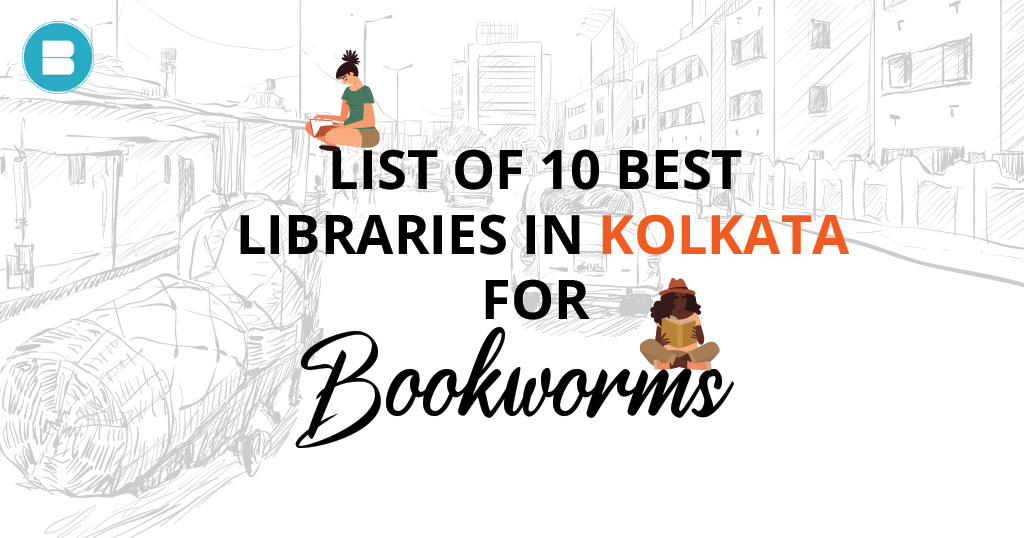
List of 10 Best Libraries in Kolkata for Bookworms
Looking for Best Libraries in Kolkata? Since ancient times, Kolkata has been known for owning and fostering information, as well as housing people who are highly educated. Because British rule flourished in the nooks and crannies of Bengal, it is often associated with a wealth of literary insight and expertise. The majority of White people’s heritage exists in the form of works such as epics, novels, manuscripts, and so on. Read: List of Best Free Book Reading Apps for Bookworms. Kolkata will now be a haven for literary wisdom. In addition to westernised literature and culture, Kolkata has knowledge as an indigenous artefact, which includes ‘Bengali’ books, novels, scriptures, and so on. So here is the list of 10 best libraries of Kolkata for your next visit: National Library British Council Library Vivekananda Pathagar State Central Library American Library RamaKrishna Mission Institute of Cultural Library IIM Library Boy’s own Library Chaitanya Library Asiatic Society Library 1. National Library Address: Belvedere Road, Block A The National Library of India ranks first on this list, with over two million books, 86,000 maps, 3,200 manuscripts, and a history dating back to the British Raj. It first opened to the public in January 1903, on a 30-acre estate. Their collection now includes digitised copies, books in 18 Indian languages, six foreign language departments, Indian and foreign official documents, newspapers, periodicals, and microforms. Their extensive collection includes rare works written prior to 1860. Borrowing and research memberships are separate. The main reading room requires a reader’s pass to enter. You may also read: First Person Point of View: An Essential Guide national library Kolkata – Best Libraries in Kolkata 2. British Council Library Address: 16 Camac Street The Elgin Public Library, located on Camac Street, houses over 20,000 books, DVDs, periodicals, and newspapers. The library proudly promotes British culture. From life events to everything else, the UK is only a phone call away! Their world-class library, which is open to British Council library members, contains everything from audiobooks to online learning materials. This library network is located in nine different countries. Kolkata’s library was founded in 1950. The library as a whole supports British history and culture, therefore living up to its name! British Council Library – Best Libraries in Kolkata You may also read this: Imposter Syndrome for Authors: Steps to Overcome Imposter Syndrome 3. Vivekananda Pathagar Address: Saktigar, Jadavpur,, Kolkata, West Bengal It is the only Town Library in the Jadavpur area of Kolkata. Over fourteen thousand English and Bengali books are available, including novels, stories, and articles of adventure for both children and adults. In 1919, some young social activists and independence fighters created the Basanta Memorial Library in memory of their late comrade, Basanta Mitra, at Sharat Chandra Banerjee’s house. In 1941, the Library was permanently relocated to its current location. To commemorate Rabindranath’s birth centenary, it was renamed Basanta Smriti Pathagar in 1961. And it has been a government-sponsored town library since 1982. You may also like: Book Review: Adult School by Anand S. Bose Vivekananda Pathagar library Kolkata – Best Libraries in Kolkata 4. State Central Library Address: 1, VIP Road, 17, CIT Rd, Scheme VI-M, Ultadanga, Kolkata, West Bengal 700054 The State Central Library is the apex body of library activities, located in a densely populated area of Kolkata. It was founded in 1956 at Emerald Tower and now has a six-story, fully-equipped building in Ultadanga, Kolkata. The location offers a variety of amenities to readers, including book lending, a reading room, and bibliographical and reference services. It also contributes to society by providing services to children and visually impaired readers, as well as other public libraries, with support from the state and federal governments. With so many private libraries springing up throughout the city, this one remains at the grassroots level of society and is a must-see! You may also read: 100+ Adjectives Begin With S (With Examples & Definitions) State Central Library – Best Libraries in Kolkata 5. American Library Address: 38-A, American Center, J. L. Nehru Road, Park Street area, Kolkata, West Bengal 700071 It was formerly known as the United States Information Service (USIS) library and is now managed by the Public Affairs Office of the American Consulate General in Kolkata. Its main goal is to give people a better understanding of the United States’ history, culture, values, institutions, politics, and day-to-day operations. It keeps 15,000 books, 162 American periodicals, and 3 newspapers on hand to keep a constant focus on the United States. It also has a virtual library called e Library USA, which provides online access to millions of books and audio-video content. It contains content from databases such as Gale, Britannica, and CQ to assist high school and university students with research. The books are also available online through the Online Public Access catalogue, which is accessible via the internet. You may also like: How to Publish a Book? | Publish Your Book | BlueRoseOne American Library Kolkata – Best Libraries in Kolkata 6. RamaKrishna Mission Institute of Cultural Library Address: 23, Gariahat Rd, Dhakuria, South End Park, Gariahat, Kolkata, West Bengal 700019 It is located in Golpark, Kolkata, and has a general collection of approximately 2,03,766 books, 5 rare articles, and 424 journals from India and abroad. The Ramakrishna Mission Institute owns this library, but it is also open to the public. The focus on ‘Indology’ – the study of Indian history, culture, and values – is the highlight of this place, and it has exclusive titles on Vivekananda, making it a hotspot for philosophical readings and mind nurturing. The library is divided into three wings: the General, Children’s, and Junior. Aside from these numerous books, it also has a large database of musical recitals that have been archived over the years. Visit this location for a relaxed, peaceful evening filled with philosophy and lectures that will open your mind. You may also like: Top 10 ELF Name Generators for Fantasy Writers RamaKrishna Mission Institute of Cultural Library – Best Libraries in Kolkata 7. IIM…

List of 10 Best Libraries in Pune for Bookworms
Looking for Best Libraries in Pune? Nothing is more calming and serene than picking up a book and escaping reality for a few minutes. A library provides access to the past as well as the future. It’s the ideal place to find your place in the world. So, if you’re a book lover like us, you’re always on the lookout for good books and valuable libraries. And if that’s the case, your search is finally over. Read: List of 10 Best Free Book Reading Apps for Bookworms We’ve compiled a list of the best libraries in Pune for you to visit if you want to rekindle your love of reading or find a productive new hobby. Come on over right away because they’re bound to have something to your liking. Here is the 10 best libraries in Pune for you all to visit and get lost in…. British Council Library Bookaholic Library Just Books Library The Phoenix Library Books Meridian Friends Library Library Mantra Albert Edward Institute Library Gyaan Adab Jagtap Model Library 1. British Council Library Address: Third floor, Ramsukh House, Ganeshkhind Road, Near Sancheti Hospital, Shivaji Nagar, Pune The British Council Library, one of the city’s most renowned and oldest libraries, has been serving bibliophiles for centuries. The library, which has over 16,000 comics, 6,000 magazines, and graphic novels, charges a small fee per year. There are several subscription plans available. The library, which has relocated from Fergusson College Road to Shivaji Nagar, is frequented by people from all walks of life, particularly young people. The British Council Pune offers a wide range of opportunities for continuous personal and professional development, including English language learning, workshops, and other events held on a regular basis. They have a large collection of books, magazines, journals, newspapers, DVDs, and other items. They have been in business since 1960 and promise to meet your reading needs in every genre, from poetry to comics to films and classics. You may also read: A Complete List of Anuja Chauhan Books British Council Library, Best Libraries in Pune 2. Bookaholic Library Address: Sai Nagri Society, Shop No A2, Near Nagarwala School, Kalyani Nagar, Pune The Bookaholic Library, with the perfect name to attract all of us modern readers, is the ideal place to find your favourite and new books. The library’s unique selling point is that their collection of weekly magazines, novels, biographies, and children’s books is updated every two weeks. There are many new and old Indian authors. The best part is that there is no monthly limit on the number of books you can rent, and the membership is very affordable. The library believes in donating books to charity events or church sales, particularly if they have duplicate books from previous donations. The library also has a small selection of used books that are available during well-organized sales. You may also like: Psychological Thriller: Definition, Tips and How to Write Bookaholic Library, Best Libraries in Pune 3. Just Books Library Address: Just Books is a chain of 12 libraries in Pune This one-of-a-kind library stocks books and is part of a chain of community libraries that offers books in a variety of genres such as fiction and non-fiction, travel, cooking, spirituality, philosophy, management, self-help, and so on. The books are appropriate for all ages, from toddlers to teens, and from bookworms to newcomers. They have more than 18,000 books, 100 weekly magazine titles, and classics by authors ranging from Emily Bronte to Amy Schumer. You can easily obtain monthly memberships or one-time plans, depending on your needs. Just Books is a more cost-effective option, with membership fees starting at Rs.900 for three months. This charming library has an impressive collection of reading materials, and you can get them delivered to your door for free. You may also read: List of Top 10 Jhumpa Lahiri Books of All Time Just Books Library, Best Libraries in Pune 4. The Phoenix Library Address: Shop No 1, Upper Ground Floor, Pratham Apartment, Survey No 727A, Kumthekar Road, Sadashiv Peth, Near Chitrashala Chowk, Pune Phoenix Library, founded in 1959 by book lover JN Ponda, is famous for the way they present their books. Every book has magazine and newspaper clippings relating to the author, subject, or title of the book that Mr. Ponda has collected over the years inside the cover. The Phoenix Library covers a wide range of genres, including fiction, biographies, science, general knowledge, travel, wildlife, humour, and cooking. They even have back issues of National Geographic and LIFE Magazine for the super-nerds! The one-of-a-kind library is also listed in the Limca Book of Records as the “Only Library with Clippings in Books.” The Phoenix Library, Best Libraries in Pune 5. Books Meridian Address: First Floor, Ashiyana Apts, DP Road, Wireless Colony, Aundh, Diagonally Opp DAV School, Pune A one-of-a-kind library with over 21000 books and 1500 magazines of all genres, for all ages, and in multiple languages. The Books Meridian also has an online library where you can order books and have them delivered to your home. With their plans, you can read an unlimited number of books each month. Based in Aundh, opposite DAV School, you can access their website by registering and paying for one of their flexible plans, and you will have access to over 18000 books and 115 magazines. Schedule your delivery and return at your leisure, and add up to ten books to your account. If you add a book to your future wishlist, they will make sure you get it. So sign up and start reading! And, no, you are not required to wait for the next set. When you return the old one, you will receive the new one! You may also like: Get Good with Money by Tiffany Aliche: Book Summary & Book Review Books Meridian Library, Best Libraries in Pune 6. Friends Library Address: Shop No. 2, Survey No. 61/2, Crystal Castle, Opp. Salunki Vihar, Wanowrie, Pune This cosy and well-stocked library has a wide selection of books, magazines, and novels…
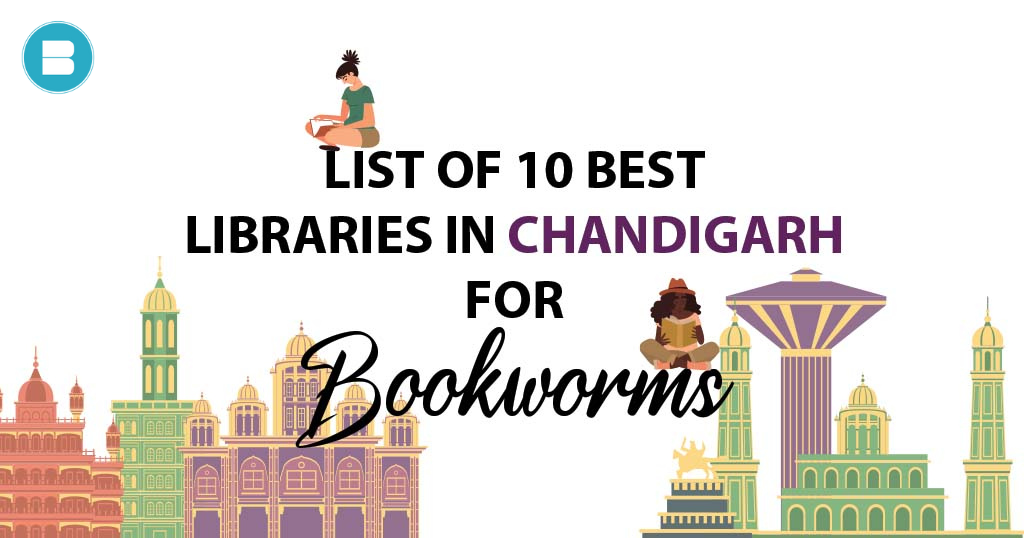
List of 10 Best Libraries in Chandigarh for Bookworms
Are you looking for best Libraries in Chandigarh? Libraries motivate us to explore, achieve, and contribute to the improvement of our quality of life. Almost all of you desire to make a difference in your lives. A library card should be the most valuable item in the wallets of all bibliophiles or book lovers. You’re probably thinking about joining a library, but nothing beats discovering a truly great library that has something to offend everyone. Chandigarh, like other major cities in India, has some well-known libraries. Many of you will agree that a library is more than simply a room full of books; it is a space of ideas, a room where history is brought to life. It is said that if you have lived in a library, you have lived through everything. A library is more than just a place to study for exams; it is also a place where your mind can wander and you can get to know yourself. So here is the collection of 10 best libraries in Chandigarh for you to visit: The State Library The Browser Library and Bookstore British Council Library Beant Singh Memorial Library Manimajra Branch Library A.C. Joshi Library Capital Book Depot PEC Library B2 Library – One Stop Place for Best Books T.S. Central State Library 1. The State Library Address: opp. Gurudwara, Sub. City Center, Sector 34A, Sector 34, Chandigarh, 160034 If you are seeking for a library that not only has a unique collection but also hosts various events, The State Library is the appropriate pick with cultural centers. They feature reading rooms, a CD collection, WiFi, an online catalogue, a physically disabled zone, and many other amenities. You can broaden your horizons by visiting the best library in Chandigarh. The library has one-of-a-kind collections in languages such as Hindi, English, Marathi, and Gujarati. Visitors can attend events at the Chandigarh Sahitya Akademi, Chandigarh Sangeet Natak Akademi, and Chandigarh Lalit Kala Akademi, which are all housed within the premises of the State Library. The State Library, Best Libraries in Chandiagrh 2. The Browser Library and Bookstore Address: First Floor, SCO 14, 15, Madhya Marg, Sector 8C, Chandigarh, 160018 If you enjoy the fragrance of leather bindings and freshly stamped stamping pads, you should definitely join a library with a collection of over 20,000 books, including the newest in fiction, non-fiction, and children’s literature. The internet library and bookstore are two of Chandigarh’s best and most popular libraries. This library is also the oldest. When you join their family, you will receive a 15% discount on your order. They also sell second-hand books at very low prices. The Browser Library and Bookstore, Best Libraries in Chandigarh 3. British Council Library Address: 178A, Elante Office Block, 515, Industrial Area Phase I, Chandigarh 160002 If you enjoy discovering new types of literature, visit the British Council’s library. They have fiction, short tales, theatre, poetry, graphic novels, and children’s publications. They have digital publications in addition to hard-bound books. They also have e-journals, e-movies, e-literature, and CDs/DVDs. The British Library has many membership levels and even non-members can enter, browse, and read books, making it one of the most popular libraries in Chandigarh. You may also read: Literary Fiction vs Genre Fiction: Definition & Examples British Council Library, Best Libraries in Chandigarh 4. Beant Singh Memorial Library Address: Sector 42 D, Near New Lake, Beant Singh Memorial, Chandigarh, 160043 The Beant Singh Memorial Library is the ideal environment for a pious individual. It is the only library that has all of the literature on religion, history, biographies of Indian personalities, world conflicts, and many other topics. Everything is conveniently located under one roof. They have a really fantastic seating configuration that can accommodate over 200 persons. It is often claimed that you can borrow the book but keep the ideas. This library is the finest source to get those ideas. Beant Singh Memorial Library, Best Libraries in Chandigarh 5. Manimajra Branch Library Address: Opposite Rana Haveli, Main Bazar, Manimajra, Chandigarh, Haryana 160101 The Mani Majra branch library was established in 1980 and is housed in the premises of the Mani Majra Designated Area Committee. The Designated Area Committee is responsible for the total upkeep of the library building, including electricity, water, and other utilities. It is open daily from 10:00 a.m. to 5:30 p.m. It has a total of 1537 members. The stock of books surpassed 15500. Every day, over 400 people visit the library. The library also offers a reference service. Reprographic services are also available. Aside from general books, reference and competitive books are being added to the existing stock. The library also provides information on job openings and various competitive exams. Manimajra Branch Library, Best Libraries in Chandigarh 6. A.C. Joshi Library Address: Panjab University, Sector 14, Chandigarh, 160014 Punjab University is linked with this library. If you are a reader looking for full seats, A C. Joshi Library is the finest place to go. There are seating configurations for over 500 readers at this library. The collection of volumes in this Library will astound you. The library is centrally air-conditioned and contains over 6.5 million publications, including journals, rare books, reports, and documents. A.C. Joshi is a library that is open 24 hours a day, seven days a week. You may also like: Romance Novel complete publishing guide in 2024 A.C. Joshi Library, Best Libraries in Chandigarh 7. Capital Book Depot Address: 1st Floor, SCO 2, near MC Office, 17E, Chandigarh, 160017 This library is ideal for relaxed reading. This library is in a great location and is a bookworm’s dream. If you’re looking for a peaceful location to read near me, this library is designed just for you. Capital Book Depot is a well-known library in Sector 17 of Chandigarh. When you walk into this library, you will notice some of the best books on display. They have a good selection of graphic novels, comics, and other books. They also sell cookery and photography books. Capital Book…
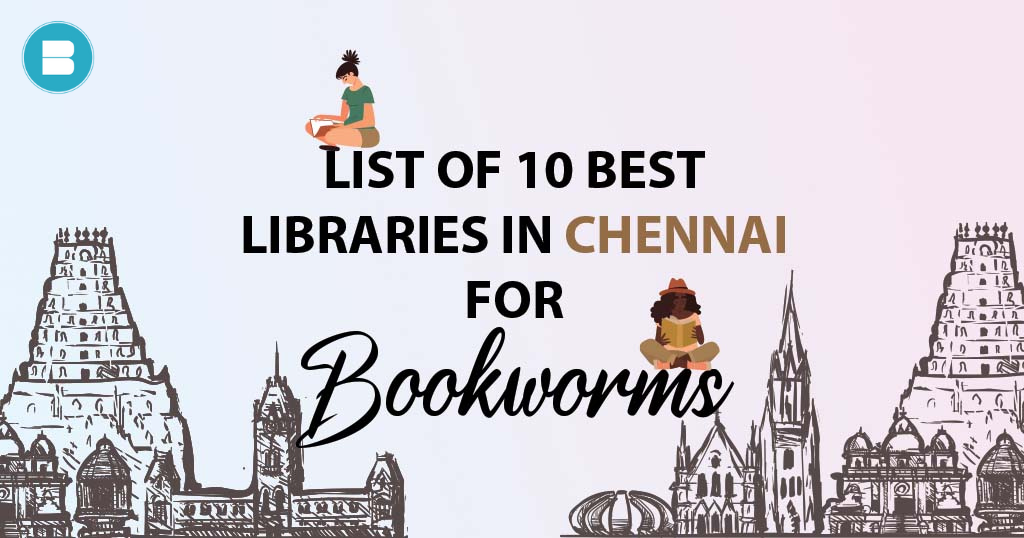
List of 10 Best Libraries in Chennai for Bookworms
Are you looking for best libraries in Chennai? My bibliophiles, we’ve got your back. You’d rather complete an entire novel than do the wash. Or, alternatively, have more bookshelves in your room than closet space. But, above all, you need a quiet space (perhaps a public library in Chennai) where you can read without interruptions. Read: Here’s a list of 15 Best Libraries in India for Bookworms that you miust visit. Here is a list of the top ten libraries in Chennai that any book lover should visit: Easwari Lending Library British Council Library Little Love Library Rajeshwari Lending Library Connemara Public Library Just Books Library Central Library Indian Institute of Technology Madras Madras Study Hall Vihara Study Hall Anna Centenary Library These are the most effective large-scale libraries in Chennai. They lend out and reference multilingual books. The best libraries are classified according to the language of the books and their country of origin. 1. Easwari Lending Library Address: New No 292, Old, No 250, Avvai Shanmugam Salai, Gopalapuram, Chennai, Tamil Nadu 600086 Easwari, a Chennai-based lending library, was founded in 1955 on Lloyd’s Road before growing and creating more branches throughout the city. They have a large book collection that includes Indian fiction, philosophy, religion, and even regional language publications. What makes it even more special is that they deliver books to your door! They even have membership options where you can take advantage of attractive deals and have your books delivered to you at a low monthly rate. You may also read: A Complete List of of Anuja Chauhan Books Easwari Lending Library, Best Libraries in Chennai 2. British Council Library Address: 737, Anna Salai, Chennai, Tamil Nadu 600002 This British Council library is only accessible to members. Nonetheless, their collection is extremely spectacular. Members receive access to a wide range of British content, including books, films, e-books, periodicals, and other publications. The British Council library houses around 20,000 physical books, 1,20,000 e-books and CDs, 15,000 journals, and 7000+ movies. The library also hosts events on a regular basis that members can attend, such as film screenings, book clubs, and book launches, to name a few. They offer various membership plans, including one for students and those who only want to use their online catalogue. This library features lovely architecture with creative reproductions strewn over the reading space. The beauty of the entire complex enhances the reading experience at the British Council. The lush green lawns and ambiance allow readers to lose themselves in their thoughts while reading. You may also like: Book Writer | 10 Must-Read Tips for Aspiring Book Writers British Council Library in Chennai – Best Libraries in Chennai 3. Little Love Library Address: 54 C, 3rd Street, River View Colony, Block AG, Opp. K3 Police Station, Anna Nagar, Chennai, Tamil Nadu 600040 Little Love Library, which is well-liked by city residents, was founded by Swetha Mohan out of her love of books and a desire to introduce more people to reading. Swetha is often on hand to help you choose what books you’re looking for, and the modest and cosy library contains everything you could ever desire. She has everything from thrillers to non-fiction, young adult to comic books, so if you have a specific book in mind, Swetha will most likely have it on her shelf. For an INR 850 deposit, you can obtain a lifetime membership that allows you to borrow an unlimited number of books per visit. You may also like: The Mighty Red by Louise Erdrich: A Deep Dive into Her Latest Novel little love library Chennai – Best Libraries in Chennai 4. Rajeshwari Lending Library Address: off E1, Police station, New no – 207 / 1 , Old, no – 95, Kutchery Rd, Mylapore, Chennai, Tamil Nadu 600004 This lending library, which was founded in 2013, is located in Chromepet. They have fiction and nonfiction, as well as books for children, a comics collection, magazines, and regional language books, as do most lending libraries. They also have college books, textbooks, and engineering student manuals. If they don’t have the book you want, make a request and they’ll do their best to find it for you. You may also like: List of Jhumpa Lahiri Books of All Time Rajeshwari Lending Library – Best Libraries in Chennai 5. Connemara Public Library Address: 37C4+5PC, ., Pantheon Rd, Chennai, Tamil Nadu 600008 The Connemara Public Library, as one of the country’s four National Depository Libraries, receives a copy of every book, newspaper, and periodical published in the country. It is also one of the oldest libraries, having opened in 1896! This 19th century library has a distinct architectural style, and its remarkable collection of volumes ranging from educational to children’s books is no joke. Friendly staff, adequate water service, air conditioning, and a relaxing atmosphere can entice anyone to visit this library. The hours of operation here are from 8 a.m. to 8 p.m. The structure itself is worth seeing, as it houses a significant collection of books, textbooks, and a reference room. You may also like: Demystifying Self-Publishing vs. Traditional Publishing: Which Is Right for You? Connemara Public Library – Best Libraries in Chennai 6. Just Books Library Address: No 19, Bagavathi Nagar, 1st Street, 1st Floor, Selaiyur, Chennai – 600073, Zion Matriculation Higher Secondary School This library is not like any other physical library; it is an online library where you may join at any time, rent a book, and it will be sent to you for a set length of time before being picked up by the library. It has a motto that reads “the more you read, the less you spend,” which is true depending on how many books you rent for yourself. It has over 2 million books to pick from and offers free delivery to your door. It is a fantastic present for children who would like to wrap up in their blanket and read and learn. You may also read: Get Good with Money by Tiffany Aliche: Book Summary…
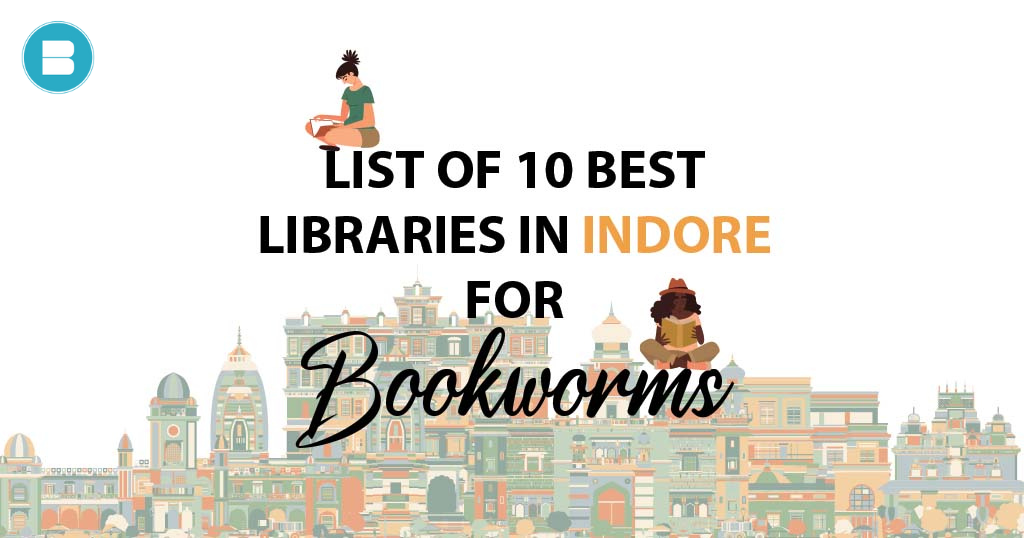
List of 10 Best Libraries in Indore for Bookworms
Looking for best libraries in Indore? Libraries are ideal for bibliophiles. Even in the age of smartphones and Kindles, this is still true. Book lovers would always make time to read books, either in a library or from the comfort of their own homes, both online and offline. Indore, Madhya Pradesh’s culturally rich city, has a rich historical relevance, and the residents are both warm and vivid readers. Read: List of 10 Online Dictionaries for writers for free… Given this, Indore has some amazing libraries and reading rooms that attract readers not only from Indore but also from other parts of the country. Here’s a list of 10 Best Libraries in Indore for Bookworms: Central Library IIM Indore Learning Center V.G. Classes Swadhyay Library The Little Free Library Library, Medi – Caps University Orlando Sitting Library Maa Khodiyaar Student Library and Reading Hall MK Study Point Library Ishwar Library and Self Study Centre 1. Central Library Address: Plot No. 23, Park Road, Behind Director’s Office, Indore, Madhya Pradesh This library contains books on current events, fiction, non-fiction, and a variety of other topics. If you are preparing for the Union Public Service Commission’s exams, this is the place for you. The library exudes a study atmosphere. It has a pleasant atmosphere to entice readers. Readers can study here with complete concentration. This library has a computer lab with free internet access for students. Students can use the internet to access a variety of journals. You may also like: Imposter Syndrome for Authors: Steps to Overcome Imposter Syndrome Central Library, Best Libraries in Indore 2. IIM Indore Learning Center Address: IIM Indore, Rao Pithampur Road The IIM Indore Library has cutting-edge technology like no other. It includes every management book ever written. But it’s not as if the library only has management books. On their shelves, you’ll also find a plethora of fiction and non-fiction editions. And, no, a 99.99 percentile on the CAT is not required to visit this library. It is sufficient to have a strong desire to read books. This cutting-edge knowledge resource room houses a large collection of books, primarily in the Management domain, as well as online databases. The library is well-lit and has one of the best infrastructures, and it is also accessible to people with disabilities. It also has a large number of journals, newspapers, novels, and books related to various competitive exams, making it ideal. IIM Indore Learning Center, Best Libraries in Indore 3. V.G. Classes Address: Third Floor, Shree Vardhan Complex, Rnt Marg, Indore All the like-minded individuals gather in the reading room to study. It is especially for those with an inquisitive mind. This reading room has everything its members need to study comfortably, including clean drinking water, a cafeteria, and an air conditioner. This reading room is easily accessible by public transportation. This makes it accessible to students who live in remote areas. It is open to students from all disciplines. Books from science, business, and the humanities are available here. There is a cafeteria, air conditioning, and clean drinking water available. This is essentially the same as a book cafe. Except for the loud customers who talk about everything but books. You may also like: Fantasy Books complete publishing guide in India 2024
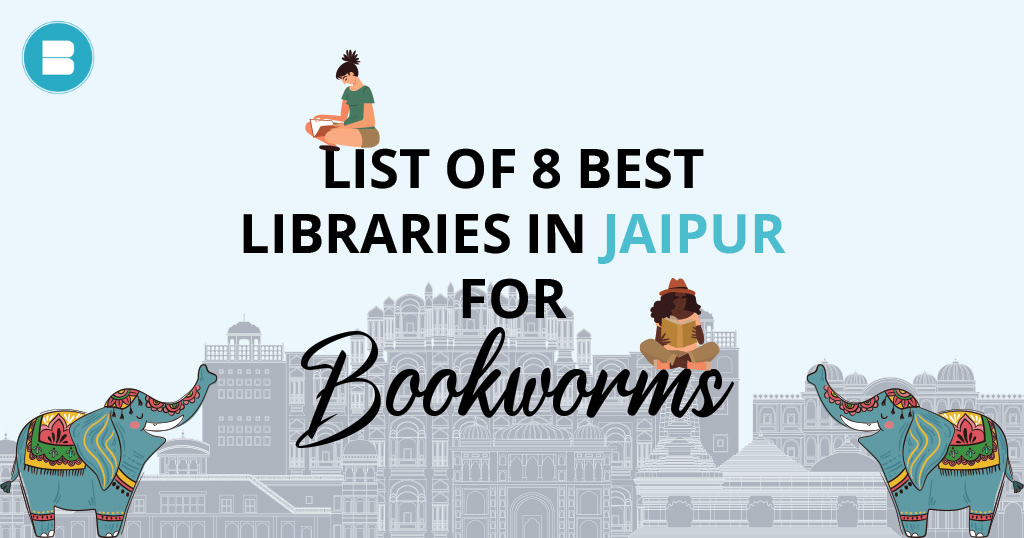
List of 8 Best Libraries in Jaipur for Bookworms
Looking for Best libraries in Jaipur? Jaipur is one of the richest states in terms of history and culture. From famous and courageous Kings and Queen to mouth-watering delicacies – Jaipur, the pink city, has it all. If you’re a bookworm, one of the best ways to unwind is to curl up with a good book and completely immerse yourself in its pages. Read: List of Top 15 Most Famous Books on Hindu Mythology So, what do you do when you want to read a good book but also want to go out? So you go to your local library and browse the shelves, smelling the old books before selecting some new titles, of course! Pick up a book at one of Jaipur’s best libraries to delve deep into history, escape into a fantasy world, or broaden your horizons and learn about something completely new! Here’s a list of Best Libraries in Jaipur for Bookworms that you must visit: Government Maharaja Public Library Shubham Reader’s Paradise Crossword Radha Krishnan Central Library Prakrit Bharti Academy B.A.G.S Central Library Om Shanti Osho Library 1. Government Maharaja Public Library Address: Rajkiya Maharaja, Sarwajanik Mandal, Chaura Rasta For students and teachers looking to conduct research, as well as avid readers looking for their next exciting read, there is no need to Google ‘libraries near me,’ as the Government Maharaja Public Library has everything you need! This historic building is as interesting on the outside as it is on the inside, making it a fun experience in and of itself. The layout is unlike any other library you’ve seen, more akin to a haveli, with an open courtyard surrounded by reading rooms. Aside from academic and fiction books, there is also a section devoted to periodicals, and everything is organised using the card catalogue method, which is a delightful trip back in time. They have an excellent collection as well as flexible lending facilities, so you’ll always leave feeling extremely satisfied. You may also read: Best Udemy Courses for Self-Published Authors Government Maharaja Public Library, Best Libraries in Jaipur 2. Shubham Reader’s Paradise Address: C-24, Ajmer Road, Gopalbari For students and teachers looking to conduct research, as well as avid readers looking for their next exciting read, there is no need to Google ‘libraries near me,’ as the Government Maharaja Public Library has everything you need! This historic building is as interesting on the outside as it is on the inside, making it a fun experience in and of itself. The layout is unlike any other library you’ve seen, more akin to a haveli, with an open courtyard surrounded by reading rooms. Aside from academic and fiction books, there is also a section devoted to periodicals, and everything is organised using the card catalogue method, which is a delightful trip back in time. They have an excellent collection as well as flexible lending facilities, so you’ll always leave feeling extremely satisfied. You may also like: Fantasy Books complete publishing guide in India 2024 Shubham Reader’s Paradise Library, Best Libraries in Jaipur 3. Crossword Address: Prithviraj Marg Crossword is possibly Jaipur’s best bookstore and library. Even if a new release isn’t available on Amazon or Flipkart, you’re likely to find it here. Furthermore, it frequently hosts high-profile book launches. So, if you’re in the right place at the right time (Crosswords), you can get signed copies from your favourite author. Better yet, have your picture taken with them. Anything that will help your bookstagram feed. You may also like: 100+ Adjectives Begin With S (With Examples & Definitions) Crossword Library, Best Libraries in Jaipur 4. Radha Krishnan Central Library Address: Opposite Rajasthan College, JLN Marg The Radha Krishnan Central Library, also known as the Dr. Radha Krishnan State Central Library, houses an 87,000-book collection as well as nearly 300 journals and magazines. It also offers researchers the use of a cabin system. The Radha Krishnan Central Library easily attracts people of all ages, from a 10-year-old child to an 85-year-old person, due to its vast collection of materials and other amenities. Every day, approximately 300 readers visit the library. Radha Krishan Central Library, Best Libraries in Jaipur 5. Prakrit Bharti Academy Address: Guru Nanak Path, Malviya Nagar Prakrit Bharati Academy is a Jaipur public library. On February 21, 1977, this library was founded with the goal of publishing books available in Prakrit, Sanskrit, Hindi, and other Indian languages in simplified English. They believed that publishing those books in simplified English would appeal to both laypeople and scholars. Several universities have recognised this Jaipur library as an outstanding library, study centre, and publishing house. Every day, the library accommodates nearly 300 readers. It has a collection of over 80,000 books of great cultural significance, which is constantly updated. You may also read: How to Write a Book Description That Grabs Readers Prakrit Bharti Academy, Best Libraries in Jaipur 6. B.A.G.S Address: 24-A Hawa Sadak, Swej Farm Link Road B.A.G.S. stands for Books, Activity, and Games Store, and it has made a name for itself in Jaipur with its original and intriguing concept. Families can look around, borrow books, and indulge their children by allowing them to try out a variety of creative hobbies at B.A.G.S. In fact, BAGS’ Hobby Ideas Section contains over 2500 DIY hobby kits and materials for children to choose from. There are also trained instructors on hand to provide ongoing guidance and demonstration for their use, so you can relax knowing they’re in capable hands. They have over 5000 appropriate books and over 500 toys to choose from, and children can take them home and return them later. You may also like: Romance Novel complete publishing guide in 2024 B.A.G.S, Best Libraries in Jaipur 7. Central Library Address: SB-96, Rajasthan University Campus, Jawahar Lal Nehru Marg, Bapu Nagar The Central Library which is also known as “Learning Resource Centre (LRC)” is one of the best libraries in Jaipur. Readers can use different reading cubicles in each sitting area/hall. The Central Library is conveniently located in the Institute’s Center,…
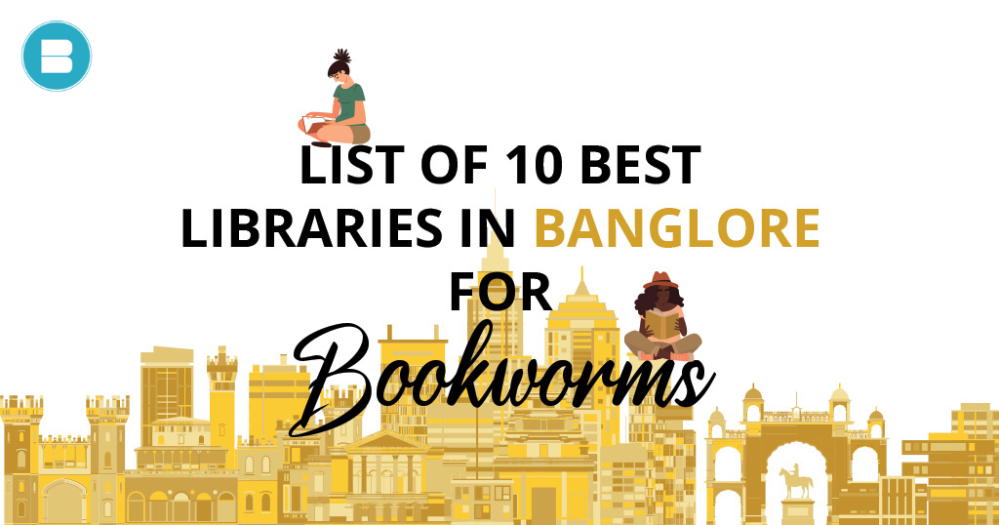
List of 10 Best Libraries in Bangalore for Bookworms
Looking for Best Libraries in Bangalore? “Everyone is welcome to walk through the door. It really doesn’t matter if you’re rich or poor. There are books in boxes and books on shelves. They’re free for you to borrow, so help yourselves.” Library…… Libraries are a treasure trove of knowledge, of learning, heaven for book lovers, for people who prefer solitude and silence, and what better way to fill those moments with other than books. Read: List of Top 15 Famous Books on Hindu Mythology So, here is the list of top 10 must visit best libraries in Bangalore. These will fulfill all your needs at a very minimal price. State central library. British council Library Eloor lending library. JRD TATA Memorial library My Hangout library Muslim library Mythic Society Just Books Nool Library Indian Institute of World Culture 1. State central library One of the city’s oldest and most beloved libraries, as well as a striking landmark for sightseeing. The red brick building with a well-kept rose garden stands out among the verdant greenery of Cubbon Park, adding to its charm. The archives are said to have a copy of every book published in the state after 1970, among other collections that will satisfy your research and leisure reading needs. A total of 2,40,093 books and periodicals (and counting) are currently in their collection, waiting to be discovered. Where: Sir Seshadri Iyer Memorial Library, (State Central Library) Cubbon Park. When: 8:30am to 10:30am. State Central Library, Best Libraries in Bangalore 2. British council Library. With cutting-edge facilities and an atmosphere that encourages creative thinking and feeds your mind’s wanderlust, this library stands out from the crowd. Aside from being a place to read and rent important books, the library is also a social gathering place where you can meet friends and explore the resources. On a regular basis, they even organise skill-based workshops and lively meet-and-greet sessions with authors. Where: British council Library. Kasturba road, bengaluru-560001 When: 10:30am to 8:30pm You may also read: How much will it cost to publish a Book in india? You may also like: Book Writer | 10 Must-Read Tips for Aspiring Book Writers British Council Library, Best Library in Bangalore 3. Eloor lending library. The Eloor Library in Bengaluru, a chain of libraries in India for the past 34 years, has one of the finest collections of books that any book lover would love to dive into and discover. Membership costs as little as Rs. 1000 per person and is fully refundable at the time of closing. The cost of renting books is also reasonable, at 10% of the cost of the book (subject to a maximum amount), with a standard reading time of 14 days. Eloor’s sections range widely, from new arrivals and classics to general fiction, non-fiction, philosophy, sports, and cookery. Where: Blue cross chambers, Bengaluru. When: 10:30pm to 8:30pm Eloor Lending Library, Best Libraries in Bangalore 4. JRD TATA Memorial library The JRD Tata Memorial Library, formerly known as the Library of the Indian Institute of Science (IISc), is by far the most impressive educational library in the country. It was founded in 1911 with the intention of serving those involved in science and research. With an annual budget of more than 12 crores, they have subscriptions to international mathematical and scientific publications such as periodicals and journals, as well as books spread across 5000 square meters. Where: Lisc campus, Bangalore When: 8:30 am to 5:30pm You may also like: Marketing Strategies for Self Published Novels | Get Noticed JRD TATA Memorial library, Best Libraries in Bangalore 5. My Hangout library My Hangout is a community reading space, a book library, and an activity centre in Bellandur, Bangalore. You can also have the books delivered to your home or office by using their online portal. They have over 10,000 books for children, young adults, and adults neatly stacked in a 1500 sqft centre. The library is warm and inviting, with bean bags and sofa chairs for maximum comfort. The library also hosts exciting activities and classes for people of all ages, such as storytelling, art/craft, writing, phonics, Rubik’s cube, and so on. Where: Green Glen Layout, Bellandur, Bengaluru, Karnataka 560103 When: 10am to 7pm. My Hangout library, Best Library in Bangalore 6. Muslim library Established in 1912, this age old muslim library is a very unique place. Every researcher’s dream, they hold books that date back to 200 years ago. The library is a treasure trove of history and great literary works, with some rare and important manuscripts in Urdu and Persian languages. The Muslim Library’s visitors’ register records the visits and comments of such notable figures as Muhammad Iqbal (who paid a visit in 1929), writer Syed Sulaiman Nadvi (1925), Baba-e-Urdu Maulvi Abdul Haq, editor of Urdu literary journal Shair (1937), Seemab Akbarabadi, poet Josh Malihabadi, and poet Jigar Moradabadi (all in 1942). Where: Shivaji Nagar, Bengaluru, Karnataka 560001 When: 10:30 am to 6:00 pm You may also like: List of 10 Best Mythological Fiction Books to Read in 2023 Muslim Library, Best Libraries in Bangalore 7. Mythic Society This library, founded in 1909, caters to the intellectual curiosity of those interested in Anthropology, Archaeology, History, Epigraphy, Culture, Traditions, Art & Architecture, Folklore Ethnology, Literature, and other subjects. They also host a number of lectures given by renowned professors on a variety of topics of interest (sign up for their newsletter to keep track). Furthermore, a government grant for their centennial celebrations has allowed for the construction of a large hall that will be converted into an art museum and a guest house for out-of-town scholars. Where: Ambedkar Veedhi, Bengaluru, Karnataka 560001 When: 10am–5:15pm Mythic Society, Best Library in Bangalore 8. Just Books Just Books has up to 30 locations throughout the city and offers the typical ‘Rent, Read, and Return’ format. For those who find it difficult to commute to larger libraries, this one is an excellent choice that is easily accessible from anywhere in Bengaluru. Furthermore, you can easily rent your favourite books online from the comfort of your…
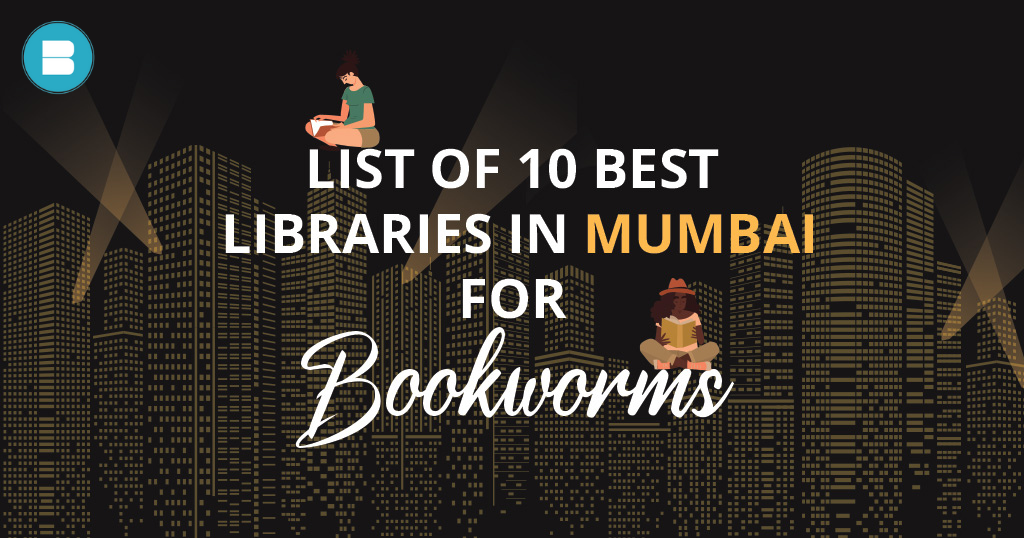
List of 10 Best Libraries in Mumbai for Bookworms
If you are looking for Best Libraries in Mumbai, Here’s a list of 10 Best libraries in Mumbai that you must visit? Libraries are peaceful little pockets away from the madness of the world where you can find some solace. While libraries provide a wealth of information, they also provide much more than just great books. The enormous cultural importance of libraries can never be denied or overlooked. If you love books and live in Mumbai, we’d say you’re missing out on a lot if you haven’t visited some of the city’s best libraries. Read: List of Top 10 Book Clubs in Delhi That Everyone Should Join This list of the top ten best libraries in Mumbai will assist you in locating a library near you that will meet all of your needs! British Council Library Trilogy Library & Bookstore Leaping Windows The American Library The Asiatic Society Of Mumbai MCubed Library NCPA Reference Library J.N. Petit Library, Fort David Sassoon Library Jawaharlal Nehru Centre Library 1. British Council Library The British Council Library, Mumbai has some unique membership plans for everyone, which encourages a large number of people to join. This is one of the best libraries in the country, not just in Mumbai. It has a diverse selection of fiction and nonfiction books, newspapers, and magazines. Exclusive theatre and film recordings are also available for listening in the library. The British Council Library is the best library in Mumbai and has revamped its collection, ushering in the digital age, and is known for its extensive collection of movies, audiobooks, theatre videos, and music. While they have the best collection of British literature in the city, their collection is quite diverse. Furthermore, they will deliver books to your door at no additional cost. The British Council Library operates nine libraries across the country, each of which strives to foster a vibrant community of bibliophiles. They also hold events and workshops on a regular basis as part of their engagement. You may also like: What is Cozy Mystery? A Beginner’s Complete Guide You may also like: Anecdote: Definition, Types, Uses with Examples – BlueRoseONE British Council Library, Best Library in Mumbai 2. Trilogy Library & Bookstore Trilogy, which is also a bookstore, has a homey feel with its simple interiors. The Trilogy Library & Bookstore is tucked away from Lower Parel’s hustle and bustle. It’s like a quiet corner where you can come to relax and read a good book. You can also find fiction and non-fiction books, books on photography and art, and graphic novels and comic books (old & new). You can easily get lost in the world of books if you come here. It has wooden flooring and wooden chairs that face the window, giving you a good view of the outside world. The owners of Trilogy are avid readers themselves, and they have a carefully curated collection of books. Whether you enjoy fiction or want to learn more about photography, you’ll find it all here. They also host events and fun workshops on occasion to keep the library alive. You may also like: A Touch of Eternity by Durjoy Dutta – Book Review You may also read: Archangels Names List: Meanings, Powers, and Symbolism Trilogy Library & Bookstore, Best Library in Mumbai 3. Leaping Windows Leaping Windows in Mumbai is the best library and is as contemporary as a library gets. A cafe serves delicious food and beverages directly above. They also offer a home delivery service, in which they will deliver the book to you and even come to pick it up. Murals of graphic novels and comic book characters adorn the walls and ceilings of the library. You can also read manga in addition to your usual books, comics, and graphic novels. This is a place where you can truly immerse yourself in pop culture. Grab a sprawl mat and enjoy your reading comfortably. You may also like: How Book Editing Can Turn Your Story into a Bestseller? You may also like: 400 Adjectives That Start with L to Level Up Your Vocabulary Leaping Windows, Best Library in Mumbai 4. The American Library The American Library’s vast collection attracts a diverse audience, ranging from classic American literature to books on self-help, psychology, science fiction, journalism, and art. The American Library’s quiet reading room is popular with students who use their extensive collection of research materials to complete their assignments. The American Library hosts a variety of cultural events on a regular basis to expose its audience to a wide range of topics. The library provides access to online journals, databases, and magazines for those who live outside of Mumbai. You may also like: Top Online Poetry Magazines for Emerging Poets You may also read: 100+ Adjectives Begin With S (With Examples & Definitions) The American Library, Best Library in Mumbai 5. The Asiatic Society Of Mumbai The Asiatic Library in Mumbai is well-known for its classic Greek and Roman architecture. Its interiors are reminiscent of a bygone era, with a massive flight of stairs leading to a grand porch lined with columns. Inside, spiral staircases on the sides lead to a large terrace. The library, which is filled with charming artefacts, provides a relaxing atmosphere. This library is well-known for its extensive collection of rare books, manuscripts, and coins. You may also like: List of Noble Peace Prize Winners in India The Asiatic Society of Mumbai, Libraries in Mumbai 6. MCubed Library The Maharashtra Mitra Mandal, also known as the MCubed Library, began as a community initiative with the intention of serving only children. However, the overwhelming response from the crowd aided in its expansion, and they now have a collection of over 10,000 books for both adults and children. They are an inclusive community that welcomes people from the poorer sections of society for free. The library hosts a literature festival each year, as well as discussions, workshops, and other activities to encourage people to read more. You may also like: Fantasy Books complete publishing guide in India 2024 You may also like: 200 Adjectives That Start with…

